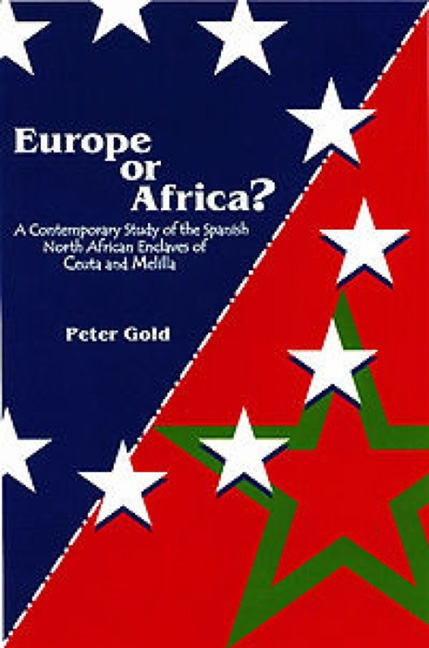Book contents
- Frontmatter
- Dedication
- Contents
- Acknowledgement
- List of figures and tables
- Map
- Introduction
- 1 The impact of the enclaves on Spanish–Moroccan relations
- 2 The enclaves within the Spanish state: the autonomy statutes
- 3 The evolving political landscape in the enclaves
- 4 The 1985 Immigration Law and community relations in the enclaves
- 5 The enclaves: a migration gateway to Europe
- 6 The enclaves: Europe or Africa?
- 7 Gibraltar and the enclaves
- 8 Conclusion: looking to the future
- References
- Index
2 - The enclaves within the Spanish state: the autonomy statutes
- Frontmatter
- Dedication
- Contents
- Acknowledgement
- List of figures and tables
- Map
- Introduction
- 1 The impact of the enclaves on Spanish–Moroccan relations
- 2 The enclaves within the Spanish state: the autonomy statutes
- 3 The evolving political landscape in the enclaves
- 4 The 1985 Immigration Law and community relations in the enclaves
- 5 The enclaves: a migration gateway to Europe
- 6 The enclaves: Europe or Africa?
- 7 Gibraltar and the enclaves
- 8 Conclusion: looking to the future
- References
- Index
Summary
The Constitutional framework
The new Constitution adopted by the Spanish Parliament in 1978 following the restoration of democracy included two articles (144 and 151) which dealt specifically with the devolution of powers by mutual consent from the centre to the newly established Autonomous Communities. Parliament had the option of continuing to view Ceuta and Melilla from a political perspective as part of Andalucía, as had been the case during the Franco regime, or as separate entities. Critically for the enclaves, the text of the Constitution included the Fifth Provisional Regulation which extended via Article 144 the option to Ceuta and Melilla to establish themselves as Autonomous Communities, subject to parliamentary approval. The process which would enable the enclaves ultimately to achieve autonomy would also test the extent to which successive Spanish governments were committed to enabling all of Spain's citizens, including those in North Africa, to enjoy the same democratic rights even in the face of possibly damaging consequences as far as bilateral relations with Morocco were concerned.
The new Constitution also established municipal councils for which elections were first held in 1979. On 28 September 1981 the Council in Ceuta took its first step towards autonomy by passing a resolution to seek autonomous status from Parliament, and the Council in Melilla followed suit two weeks later. The Draft Bill (which related to Melilla but which would also be used for Ceuta if it was successful) was drawn up in March 1982 by the Ministry for Local and Regional Government and sought to offer the enclaves the maximum possible autonomy within their size and status as municipalities. It was the attempt to reconcile both sides of this equation and to interpret their implications in practice that was to prove so contentious and thereby cause an extensive delay of almost a decade and a half before legislation was finally put in place.
Further draft proposals were produced at the end of 1984 (by the Council in Ceuta) and in early 1985 (by the Ministry) although to the dismay of the ceutís the Government had decided that the law would have to be promulgated through an ordinary law and not via an organic law (i.e. one based on the principle of the existing autonomy statutes), although this decision was reversed by the time that the proposals were published over three years later.
- Type
- Chapter
- Information
- Europe or Africa?A Contemporary Study of the Spanish North African Enclaves of Ceuta and Melilla, pp. 36 - 55Publisher: Liverpool University PressPrint publication year: 2000

